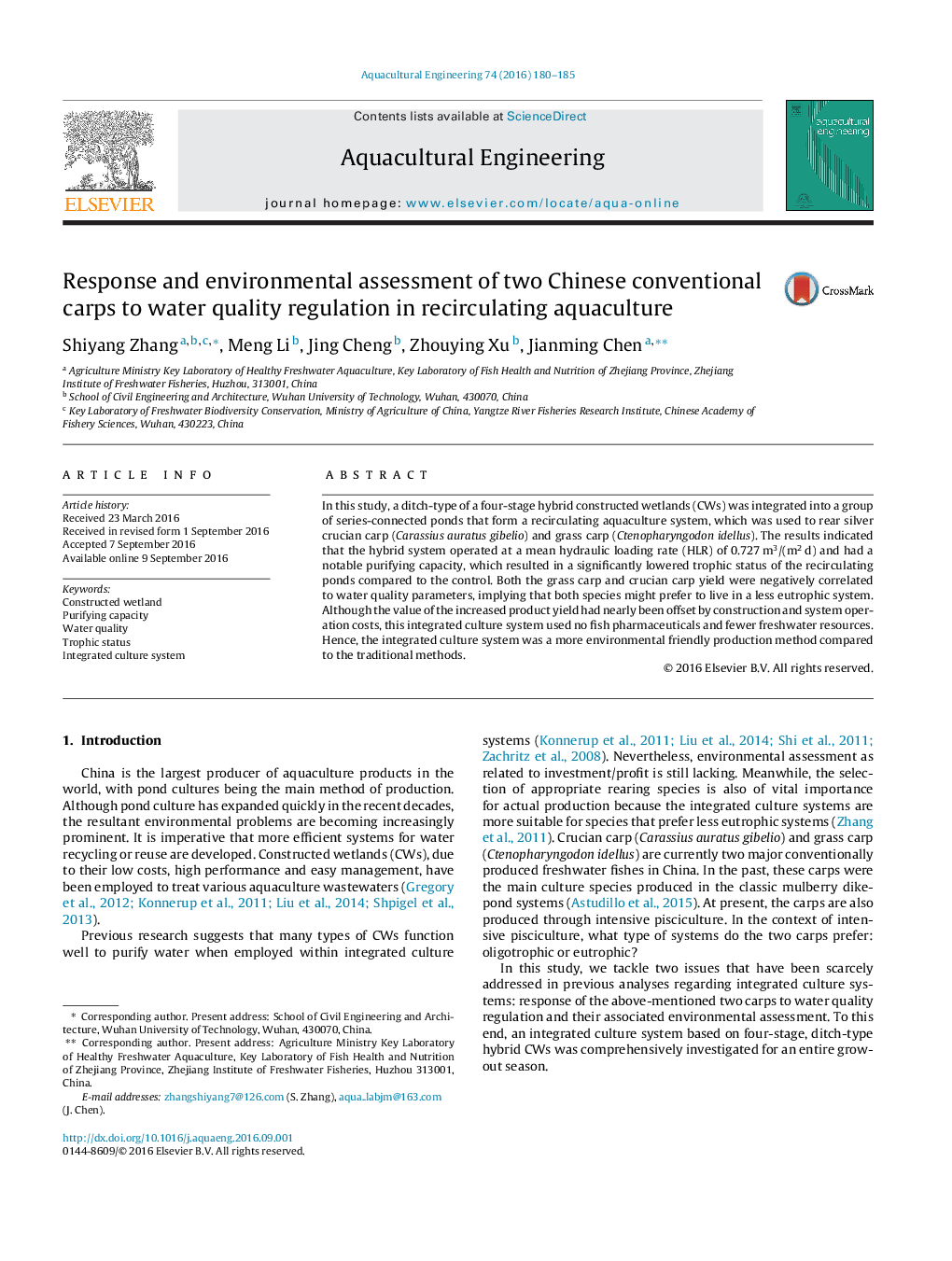| Article ID | Journal | Published Year | Pages | File Type |
|---|---|---|---|---|
| 6381261 | Aquacultural Engineering | 2016 | 6 Pages |
â¢The hybrid system displayed higher purifying capacity.â¢Both carps might prefer to live in less eutrophic system.â¢Increased value had been offset by construction/operation costs.â¢The integrated mode was an environmental friendly production method.
In this study, a ditch-type of a four-stage hybrid constructed wetlands (CWs) was integrated into a group of series-connected ponds that form a recirculating aquaculture system, which was used to rear silver crucian carp (Carassius auratus gibelio) and grass carp (Ctenopharyngodon idellus). The results indicated that the hybrid system operated at a mean hydraulic loading rate (HLR) of 0.727Â m3/(m2Â d) and had a notable purifying capacity, which resulted in a significantly lowered trophic status of the recirculating ponds compared to the control. Both the grass carp and crucian carp yield were negatively correlated to water quality parameters, implying that both species might prefer to live in a less eutrophic system. Although the value of the increased product yield had nearly been offset by construction and system operation costs, this integrated culture system used no fish pharmaceuticals and fewer freshwater resources. Hence, the integrated culture system was a more environmental friendly production method compared to the traditional methods.
